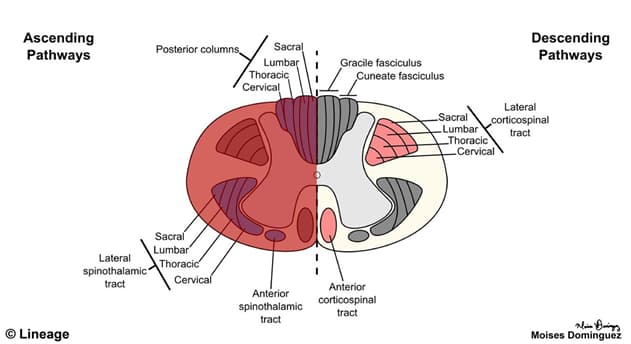Overview

Snapshot
- A 17-year-old man presents to the emergency department after a physical altercation that resulted in a stab wound. He was stabbed at level T12 in the back. On physical examination, there is significant muscle weakness affecting the whole right lower extremity. There is also impaired vibration and proprioception sense of the right leg and loss of pain and temperature sense of the left leg.
Introduction
- Clinical definition
- Etiology
- penetrating trauma
- blunt trauma
- disc or bone herniation
- spinal cord hematoma or tumor
Presentation
- Symptoms
- below the site of the lesion you have ipsilateral
- upper motor neuron (UMN) signs
- due to involvement of the corticospinal tract
- loss of proprioception, light touch, and vibration sense
- due to involvement of the dorsal column medial lemniscus pathway
- upper motor neuron (UMN) signs
- below the site of the lesion you have contralateral
- loss of pain, temperature, and crude touch
- due to involvement of the spinothalamic tract
- loss of pain, temperature, and crude touch
- an ipsilateral Horner syndrome may result if
- the spinal cord lesion occurs above T1
- due to involvement of the oculosympathetic pathway
- the spinal cord lesion occurs above T1
- below the site of the lesion you have ipsilateral



